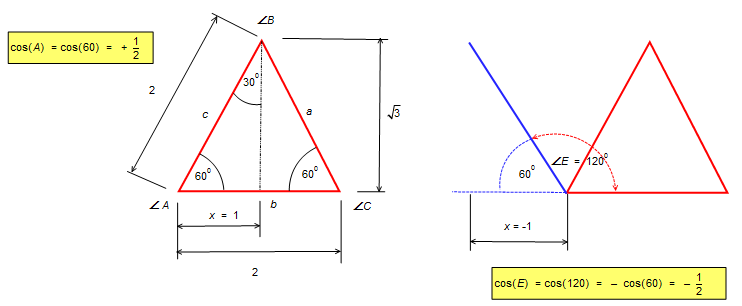How do you evaluate #cos^-1(-1/2)#?
2 Answers
Which is the same as:
Explanation:

Let the unknow angle be
So if this was the condition (it is not!) then
But we have
As the hypotenuse is positive then
So
Thus
so
For radian measure
Explanation:
We are asked to find which angle has a cos value of
In a rotation of
The first step is to establish the quadrants in which Cos has negative values,
Cos is negative in the
(between
To find the root angle we use
In the second quadrant:
In the third quadrant:


